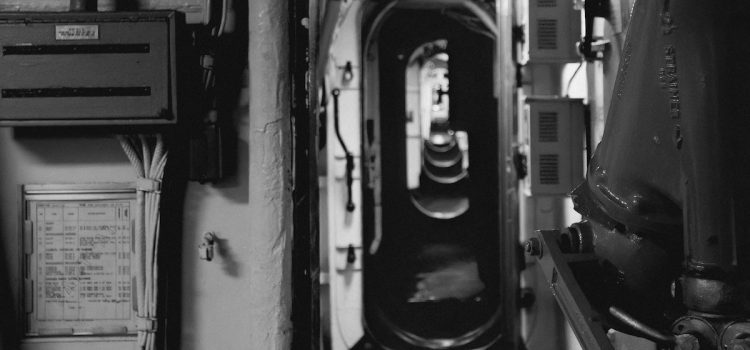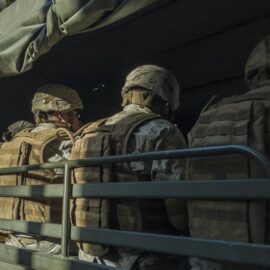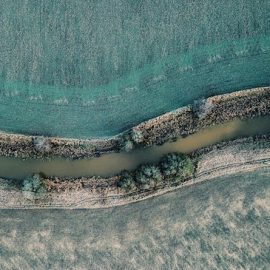

This article is an excerpt from the Shortform book guide to "His Very Best" by Jonathan Alter. Shortform has the world's best summaries and analyses of books you should be reading.
Like this article? Sign up for a free trial here.
Who influenced Jimmy Carter as much as his parents did? Why did his naval service end prematurely?
We all think of Jimmy Carter as a president and humanitarian, but sometimes we forget that he served in the US Navy in the first part of his career. Biographer Jonathan Alter recounts Carter’s naval service in his book His Very Best.
Read more to learn about Jimmy Carter in the Navy.
Jimmy Carter in the Navy
As Carter grew up and set his sights beyond Georgia, he aspired to become an officer in the US Navy. In 1943, during World War II, Carter was accepted to the Naval Academy in Annapolis, Maryland, where the emphasis was on instilling cadets with the values of courage, integrity, and justice. Alter writes that the intense hazing Carter went through taught him how to bottle up his anger. Carter didn’t graduate until after WWII had ended, but he ranked near the top of his class.
When we think of Jimmy Carter in the Navy, we typically consider his submarine service. After several short-term assignments, he joined the nuclear submarine program under the command of Admiral Hyman Rickover.
(Shortform note: The hazing of first-year cadets such as Carter was a practice for which the Naval Academy had been criticized long before his admission. However, hazing wasn’t officially stopped until 1990, after an incident in which a female student resigned due to excessive abuse. In higher education in general, the bullying of underclassmen as a form of “initiation” has been linked to alcohol and drug abuse, an increase in violence based on race and gender, and even student deaths. After the Naval Academy put a stop to the practice, there was no corresponding drop in discipline, achievement, or unity at the school, despite arguments that hazing was needed to toughen up recruits and weed out the weak.)
Admiral Rickover was like Carter’s father—prickly, demanding, and stingy with praise. Perhaps because of that, Alter claims that Rickover was as much an influence on Carter as his parents had been. When Rickover pressed Carter as to whether he’d given his all at the Academy, Carter admitted that he hadn’t and resolved to do his very best from then on. Rickover taught Carter to hold himself to high standards and to understand problems fully to solve them. Carter would take these values to the White House, along with his father’s and Rickover’s shared trait of expecting the best from others without often acknowledging when they excelled.
(Shortform note: Hyman G. Rickover was a Russian/Polish immigrant who graduated from the US Naval Academy in 1922. He served on early submarines in the 1930s and was assigned a vital commanding role over the Navy’s engineering and repair division during World War II. After the war, Rickover developed the US’s nuclear submarine program in which Carter served for several years. Still on active duty during Carter’s term as president, Rickover finally retired at the age of 82 as the US’s longest-serving naval officer.)
Carter’s naval career and his life outside the South (with postings in Maryland, Connecticut, and Hawaii) would end due to his father’s failing health. In 1953, Carter returned to Plains to take care of James, Sr., in his final days. Alter writes that Carter discovered the impact his father had made on his community through acts of quiet generosity, such as anonymously giving clothes to poor children and granting lenient loans to help struggling families—loans that Carter’s father canceled altogether in the last days before his passing. When he saw how his father had touched so many lives, Carter was forced to question his own life’s worth and whether he should follow in his father’s footsteps. He ultimately decided to leave the Navy and take his father’s place as a pillar of his town.
(Shortform note: While it’s impossible to be certain what path Carter’s life would have taken had he continued his military career, his next assignment almost surely would have been to serve as the engineering officer aboard the USS Seawolf (SSN-575), the US’s second nuclear submarine, which remained in service until 1987. Although the US Navy traditionally memorializes former presidents by using their names for aircraft carriers, it made an exception with the nuclear submarine USS Jimmy Carter in recognition of his active role in contributing to the development of the submarine program.)

———End of Preview———
Like what you just read? Read the rest of the world's best book summary and analysis of Jonathan Alter's "His Very Best" at Shortform.
Here's what you'll find in our full His Very Best summary:
- A fresh perspective on Jimmy Carter's time as president
- How Carter's early life shaped his political career
- The long-term effects of what Carter accomplished while president






